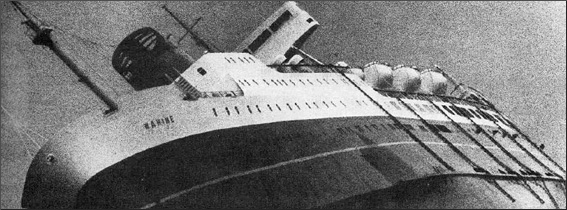Review: The Wahine Disaster
It’ll be interesting to see how Kiwis respond to The Wahine Disaster for two reasons. Firstly, of course, is the fact that the event has registered on the national psyche like few others. On the psychic landscape of New Zealand popular consciousness, the Wahine is a lead-ball singularity dragging all other events into its orbit. The […]

It’ll be interesting to see how Kiwis respond to The Wahine Disaster for two reasons. Firstly, of course, is the fact that the event has registered on the national psyche like few others. On the psychic landscape of New Zealand popular consciousness, the Wahine is a lead-ball singularity dragging all other events into its orbit.
The second – exponentially more trite – reason to be interested in public reception to this fine piece is that New Zealanders, on this very site, have voted Titanic as the single most despised film ever to be available for viewing within this country.
So if Titanic is hated with a passion reserved for few other films, while Wahine is remembered with a reverence similar in quantity – well, if one were of a mind to see both as media events, what would one say about that?
Quite likely New Zealanders would say, yes, but it’s the emotionality of Titanic we can’t stomach. All that operatic bluster. All that Celine Dion. Wahine, they’d say, is also about regular folk descending into gut-wrenching chaos; but they made a good go of it. Wahine is our tragedy because we just got on with being tragedised.
This right-you-are attitude makes Wahine an odd sort of beast. On the one hand, the raw pandemonium of the events recounted keeps the storytelling taut, gripping, and certainly never outstaying its welcome.
On the other, there’s a seldom-breached reserve that’s simply at odds with the pictures we’re seeing. It’s hard to know what to believe – the people who were there, or the pictures they brought back.
What may never be explored with this laudable level of depth or attention is why we care so deeply about Wahine: what it is about the notion of a shipwreck just off the Wellington shore that should freeze the image so indelibly in the memory-bank of all who see it.





















